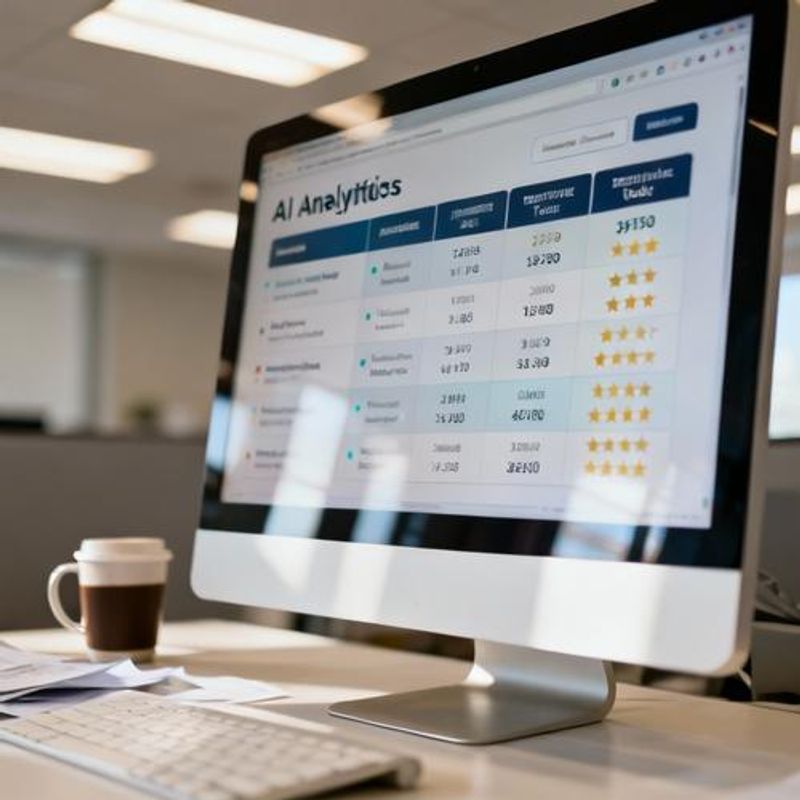The Ultimate AI Tools Search Guide for Data Analysts: Find the Perfect Analytics Solution in 2024

Spending hours manually searching for AI tools that actually solve your analytics challenges? You're not alone. Most data analysts waste 40% of their tool research time on solutions that don't fit their specific needs. This comprehensive guide reveals the exact framework successful analysts use to find, evaluate, and implement AI tools that transform their workflow—saving you weeks of trial and error while ensuring you choose tools that deliver measurable results.

Why Traditional AI Tools Search Fails Data Analysts
Generic AI tool directories overwhelm you with marketing fluff while missing the technical details you need. Most platforms focus on broad business applications rather than the specific requirements data analysts face: data source compatibility, statistical accuracy, automation capabilities, and integration complexity. Without a systematic approach, you end up testing tools that look promising but fail when applied to real datasets. This wastes budget, delays projects, and frustrates stakeholders who expect data-driven insights on tight deadlines.
Quick Reference: Essential AI Tools Search Criteria
Before diving deep, here are the non-negotiable criteria that separate genuinely useful AI tools from expensive disappointments:
- Data source compatibility (SQL databases, cloud warehouses, APIs)
- Statistical methodology transparency and validation options
- Automation capabilities that reduce manual data preparation
- Export formats compatible with your reporting workflow
- Scalability for growing datasets and user requirements

The 4-Phase AI Tools Search Framework
Phase 1: Requirements Mapping
Start by documenting your current workflow bottlenecks. Identify which tasks consume the most time: data cleaning, exploratory analysis, model building, or report generation. Map your existing tech stack including databases, BI tools, and programming languages. This prevents selecting tools that create integration headaches. Document stakeholder requirements for output formats, update frequencies, and collaboration features. Clear requirements prevent feature creep and keep your search focused.
Phase 2: Strategic Tool Discovery
Use specialized directories like G2's Analytics category, Capterra's Business Intelligence section, and AI-focused platforms such as There's An AI For That. Search by specific use cases rather than broad categories. Join data science communities on Reddit, Discord, and LinkedIn where practitioners share real experiences. Check academic papers and case studies for emerging tools that haven't hit mainstream marketing yet. GitHub repositories often reveal powerful open-source alternatives to expensive commercial solutions.
Phase 3: Technical Validation
Request sandbox access or free trials with your actual data, not demo datasets. Test data import processes, processing speed with realistic volumes, and output quality. Verify statistical methods align with your standards—many AI tools use simplified algorithms that produce impressive demos but fail rigorous analysis. Document integration complexity, learning curve duration, and support responsiveness. Create a scoring matrix that weights technical capabilities against business impact.
Phase 4: Implementation Planning
Calculate total cost of ownership including licensing, training, maintenance, and potential consulting fees. Plan rollout phases starting with pilot projects that demonstrate value quickly. Establish success metrics before deployment to avoid subjective evaluations later. Create backup plans for data export and workflow migration if the tool doesn't meet expectations. Schedule regular reviews to ensure the tool continues meeting evolving requirements.
Ready-to-Use AI Tools Evaluation Template
Copy this evaluation framework to systematically compare tools:
**Technical Requirements (40% weight)**
• Data source compatibility: Rate 1-5
• Processing speed with your data volume: Rate 1-5
• Statistical method accuracy: Rate 1-5
• Integration complexity: Rate 1-5
**Business Impact (35% weight)**
• Time savings potential: Rate 1-5
• Output quality improvement: Rate 1-5
• Stakeholder satisfaction: Rate 1-5
**Practical Considerations (25% weight)**
• Total cost of ownership: Rate 1-5
• Learning curve: Rate 1-5
• Vendor support quality: Rate 1-5
• Exit strategy feasibility: Rate 1-5
Multiply each rating by its category weight, sum the results. Tools scoring above 3.5 merit detailed trials.

Critical Mistakes That Derail AI Tools Search
**Falling for Demo Magic**: Vendor demonstrations use optimized datasets that hide real-world performance issues. Always test with your messiest, most representative data.
**Ignoring Integration Complexity**: A powerful tool that requires weeks of setup and ongoing maintenance may deliver less value than a simpler solution that works immediately.
**Underestimating Training Time**: Factor learning curves into ROI calculations. Tools requiring extensive training delay value realization and may face user resistance.
**Overlooking Data Governance**: Ensure tools meet your organization's security, privacy, and compliance requirements before investing time in evaluation.
**Choosing Based on Features, Not Outcomes**: More features don't guarantee better results. Focus on tools that excel at your specific use cases rather than trying to find one-size-fits-all solutions.
Start Your Strategic AI Tools Search Today
Transform your analytics workflow by implementing this systematic approach to AI tools search. Begin with the requirements mapping template this week—documenting your current pain points takes just 2 hours but prevents months of tool selection mistakes. Remember: the best AI tool is the one that solves your specific challenges while fitting seamlessly into your existing workflow. Ready to discover more data analytics resources? Explore our comprehensive tool database, join our community of practicing analysts, and access detailed implementation guides that turn tool selection into strategic advantage.